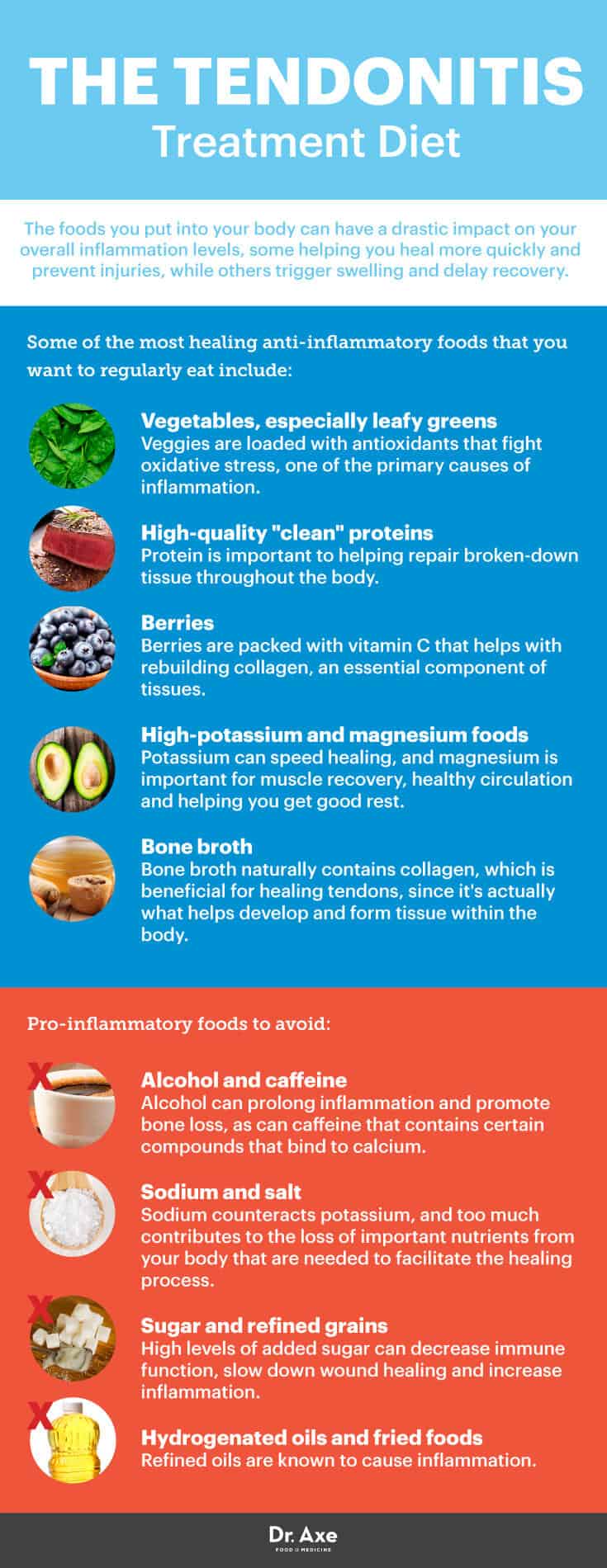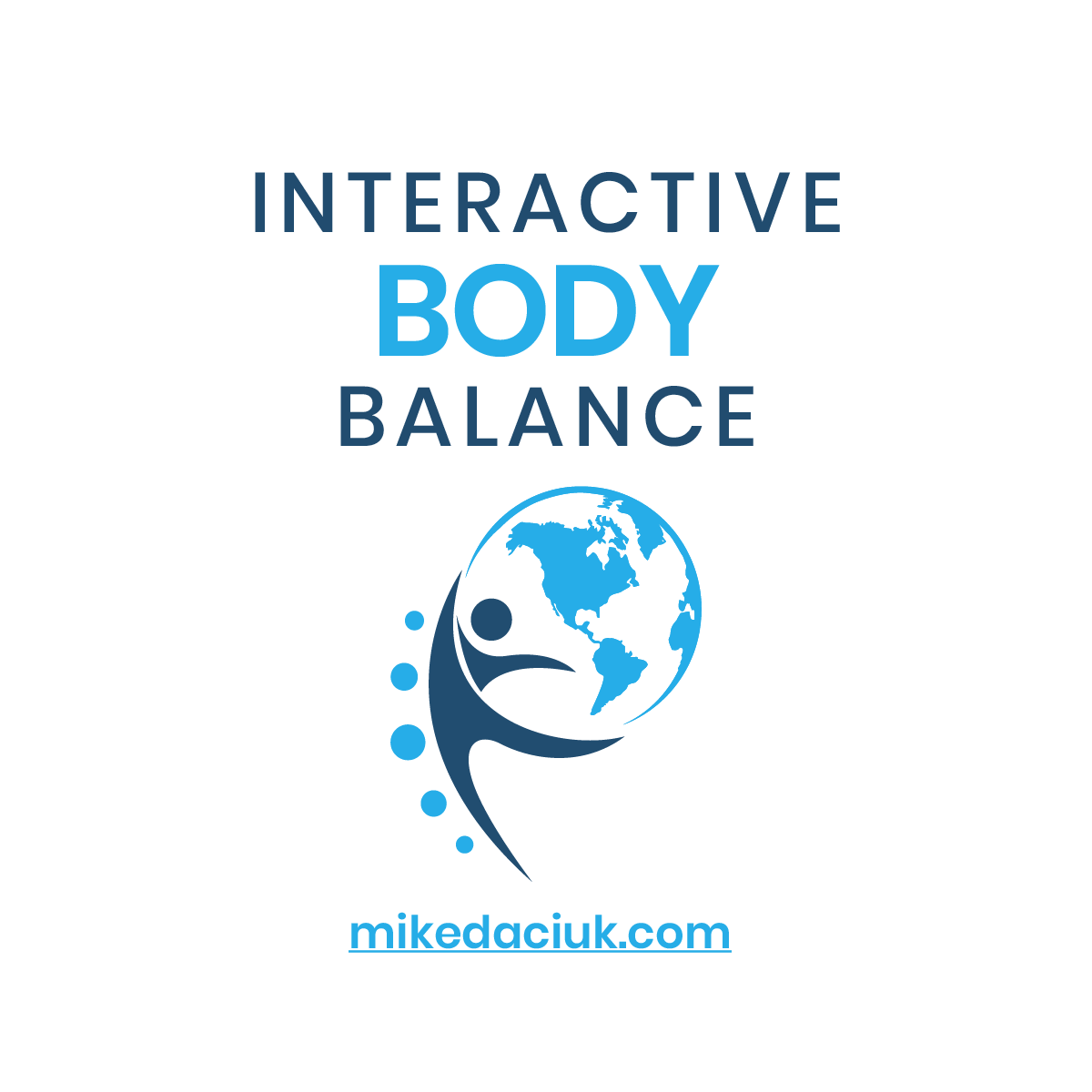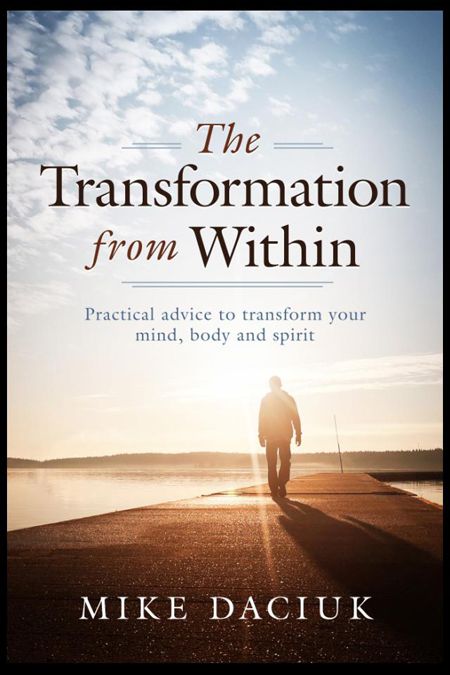Natural Treatments for Tendonitis
Tendonitis (which is also sometimes spelled tendinitis) is a form of painful inflammationin the tendons, which are the chord-like parts of the body that connect muscles to bones. Usually caused by repetitive movements (like exercise or sitting in the same position for many hours), injuries or built-up inflammation over time, tendonitis can cause a lot of pain.
People who are over 40 years old tend to get tendonitis more than younger people, but really anyone can development symptoms depending on how damaged versus elastic tendons become. It’s true that as we age, our ligaments, bones and tendons slowly weaken with everyday wear and tear, so we’re more likely to experience things like muscle or joint pain. Tendonitis comes down to experiencing inflamed tendons that are more susceptible to stress, strain, movement and tears. Despite what most people assume, this can affect people of all ages, sizes and physical activity levels, not just serious athletes or the elderly.
Tendonitis is treated in different ways depending on where it’s located on the body, how long it’s been present and the person’s physical activity level. If you visit an orthopedic or doctor to help treat your tendonitis, he or she might prescribe a treatment plan involving getting plenty of rest, taking time off from exercise, using ice/heat packs, attending physical therapy, or taking pain-killing and anti-inflammatory medications.
Most of the time drastic measures like having surgery performed or getting ongoing injections isn’t needed, but in the case where a tendon ruptures, these can be used to manage the situation quickly.
Tendonitis Signs and Symptoms
Tendonitis symptoms can vary in terms of how long they last, some healing within a couple weeks with others lasting for more than a few months. It really all depends on how severe your injury is, how long it’s been going on and how much inflammation has developed. The sooner you address the problem, rest and seek treatment, the quicker you should be able to see symptoms subside.
Some of the common areas of the body where tendonitis can develop include theknees, shoulders, heels, elbows, wrists, hips and hands. Different types of tendonitis go by various names depending on how and where it forms, for example:
- “Tennis elbow”
- “Golfer’s elbow”
- “Pitcher’s shoulder”
- “Swimmer’s shoulder”
- “Jumper’s knee”
Some common signs indicating that you might have tendonitis include:
- feeling pains and aches around a specific ligament, joint or muscle
- swelling and tenderness
- increased pain when moving or exercising
- stiffness
- trouble sleeping due to pain
Common Causes of Tendonitis
Because repetitive movement is one of the most common causes of tendonitis, everyday activities like typing, cleaning, running or playing sports can trigger its development. In fact, even though an injury can kick-start the development of tendonitis, usually it’s someone’s job or hobbies that mainly cause the problem. This is especially true when someone begins these activities abruptly (like a workout plan, for example) and does too much too soon.
Some of the many activities that can cause tendonitis to form include:
- Sitting at a desk with incorrect posture
- Jogging/running (which affect the heels)
- Not stretching after exercise
- HIIT workouts and other forms of sprints (especially when you haven’t properly warmed up or rested enough)
- Dancing
- Basketball (one of the causes of “jumper’s knee”)
- Cycling or using the elliptical machine
- Gardening
- Golf
- Tennis
- Working with your hands for many hours every day (including carpentry, cleaning, shoveling, etc.)
- Skiing
- Baseball (throwing and pitching affects the shoulder)
Don’t get the wrong idea just yet — the risk for developing tendonitis isn’t an excuse to avoid exercise and being active! These activities aren’t the only things that can trigger your tendons to become inflamed. Existing medical conditions like rheumatoid arthritis,gout, thyroid disorders, infections and reactions to certain medications can also place added stress on the tendons.
Poor posture and certain abnormal bone or joint developments, like having legs or arms that are not equal in length, can also set the stage for tendonitis. And in some cases older people can form tendonitis after bracing themselves during a fall, which triggers inflammation in the joints or tendons. Because tendons are chords of “fibrous” tissue, really any type of stressful movement or internal infection or cause of swelling can strain them to the point of injury.
While there are hundreds of tendons throughout our bodies, only a number of specific ones seem to cause the vast majority of tendonitis cases. That’s because these tendons are used the most in everyday life and also might receive less blood flow. Poor blood supply and difficylty getting nutrients to tendons can contribute to tissue damage and inflammation, which is why it’s important to do what you can to improve circulation, nutrient intake, blood pressure levels and bodywide inflammation.
Natural Treatments for Tendonitis
1. Take Time Off from Exercise and Rest
A little extra self-care can go along way when healing from tendonitis. If you’re an athlete or someone who regularly exercises, you might be disappointed to hear that many people need to take time off from the gym, group sports and other workouts in order to let their tendons fully heal. But think about how you’d treat yourself if you suffered from an injury like a sprained ankle; wouldn’t you find it necessary to take some extra down time?
It’s especially important to try and pinpoint which type of activity could have contributed to the development of your tendonitis (for example, running or tennis) so you know that it’s best to at least temporarily stop doing that activity.
How long do you need to rest and hold off exercising? This all depends on which tendon is affected and how severely it’s inflamed. You actually don’t want to rest for too long, since this can leave your tendons stiff (not to mention it causes you to miss out on all the other benefits of exercise like weight management and stress reduction).
Try to give yourself enough time to heal so you notice pain and swelling has gone down. Talk to your doctor about what this time period might mean for you personally. Then aim to gradually restart exercise when your pain allows, remembering to keep things at a lo -intensity for a while, stretch and take breaks regularly.
If you do continue to stay active in some sort of low-intensity way, make sure to avoid any activities that cause your pain to get worse. If you continue to exercise in a way that strains your tendons, you’re only doing further damage and ultimately prolonging the period it’s going to take to solve the problem.
2. Follow an Anti-Inflammatory Diet
Like nearly all injuries and even chronic diseases, inflammation only makes matters worse. The foods you put into your body can have a drastic impact on your overall inflammation levels, some helping you to heal more quickly and prevent injuries, while others trigger swelling and delay recovery.
Some of the most healing anti-inflammatory foods that you want to regularly eat include:
- All types of vegetables, especially green leafy kinds — Veggies are loaded with antioxidants that fight oxidative stress, one of the primary causes of inflammation. Try to make half your plate cooked or raw veggies with every meal, aiming to regularly include kinds like kale, broccoli, spinach and other greens. Leafy and cruciferous vegetables are especially high-antioxidant foods loaded with vitamin C, vitamin K and minerals that speed up the healing process.
- High-quality “clean” proteins — Protein is important to helping repair broken-down tissue throughout the body, so protein deficiency can cause weakness, delayed recovery, fatigue and bodily pains. A good rule of thumb is to try to get at least four to five ounces of quality protein per meal. Some of the best choices, which include the most easily utilized amino acids, are organic, lean proteins like wild-caught fish a great source of anti-inflammatory omega-3 fatty acids), raw dairy, cage-free eggs orgrass-fed beef. Another benefit of these foods is that most pack in zinc (found in high levels in beef, pumpkin seeds and spinach); zinc benefits include tissue development and repair.
- Berries — Berries are packed with vitamin C that helps with rebuilding collagen, an essential component of tissues. Other vitamin C foods include citrus fruits, squash, green veggies and bell peppers. Berries are also a great source of antioxidants thatfight free radical damage, one of the causes of increased injuries into older age.Pineapple is another great fruit choice because it supplies bromelain, a compound great for treating swelling and injuries.
- High-potassium and magnesium foods — Potassium-rich foods like coconut water, avocados, greens and bananas can speed healing. Magnesium found in these same foods are also important for muscle recovery, healthy circulation and helping you get good rest.
- Bone broth — Bone broth naturally contains collagen, which is beneficial for healing tendons, since it’s actually what helps develop and form tissue within the body. Not only is it useful for tendonitis cases, but it can also aid in recovery from sprains, strains and ligament injuries.
On the other hand, these foods can increase inflammation and make tendonitis worse:
- Alcohol and caffeine — Alcohol can prolong inflammation and promote bone loss, as can caffeine that contains certain compounds that bind to calcium. We need calcium to help heal tissue that’s been damaged, so this can stall your body from properly repairing itself — so avoid caffeine overdose and limit alcohol consumption.
- Too much sodium and salt — Sodium (found in nearly all packaged foods) counteracts potassium, and too much contributes to the loss of important nutrients from your body that are needed to facilitate the healing process, so avoid high-sodium foods as much as possible.
- Sugar and refined grains — High levels of added sugar can decrease immune function, slow down wound healing and increase inflammation, not to mention contribute to unwanted weight gain, which can make tendonitis symptoms worse. That means you want to kick that sugar addiction to heal your tendonitis.
- Hydrogenated oils and fried foods — Just like with sugar, refined oils are found in processed foods and are known to cause inflammation since they are a source of “pro-inflammatory” omega-6 fatty acids.

3. Try Using Ice Packs
Icing painful areas can help ease swelling and is an easy treatment method you can try at home. This is especially important in the first day or two following an injury or when you notice swelling developing. Use ice packs to lower tendonitis symptoms by placing one on a barrier first (not directly on your skin), such as a piece of clothing, paper towel or dish towel, and then holding it up to the area that hurts.
A lot of people like to simply use a bag of ice cubes or frozen vegetables wrapped in a towel, pressed against the body for 15–20 minutes at a time. You can practice icing up to several times a day or until you notice a decrease in pain.
4. Talk to a Doctor about Alternative Treatments
When need be, some of the ways that orthopedics treat tendonitis include:
- Prescription or over-the-counter painkillers — Usually for mild pain, ibuprofen taken now and then can help, but sometimes more severe cases require prescription gels that are applied directly to the area or stronger pain-reducing medications to be taken temporarily.
- Physical therapy — Some people choose to try physical therapy for tendon injuries, which involves seeing a specialist who works with you to prescribe special isolated movements. The goal of physical therapy is to slowly start stretching the injured tendon in a controlled matter, while increasing flexibility and strength in the supporting muscles around the tendon.
- Chiropractic treatments — Either a trained chiropractor or physical therapist can assess your posture and give you tips for performing certain activities in a safer way.Your chiropractor could be your newest antioxidant because the researched benefits of chiropractic adjustments are plentiful. For example, if you regularly do work that involves standing and moving, or you’re experiencing pain when exercising, both professionals can show you helpful techniques related to stretching, flexibility and proper posture to lower the chance or injuries.
- Corticosteroid injections — Sometimes a doctor might recommend that a patient gets steroid injections to help quickly reduce pain and swelling. Generally, this isn’t a good method for preventing or treating tendonitis long term, but it can be a quick-fix solution when the injury is severe enough. Injections do come along with some side effects sometimes, like changes in skin color, weakening the tendon and causing increased swelling. Most people wneed to wait six weeks or more between injections, so in this time period it’s important to focus on solving the problem by addressing other factors like rest and your diet.
- Extracorporeal shock wave therapy (ESWT) and surgery — As a last resort, your doctor might recommend you try ESWT or consider surgery, especially if you have tried other remedies and are still experiencing persistent symptoms. ESWT is a low-pain treatment that sends shock waves through your skin to the tendon in order to help break up deposits that have built up. Like injections, this comes with side effects and shouldn’t be your first choice of treatment.
- Surgery is another option but carries complications like side effects to anesthesia and medications, infections, scarring, and rupturing the tendon. Arthroscopy is one type of popular surgery performed on people with “tennis elbow,” a common type of tendonitis, that is said to result in less recovery time since it isn’t as invasive as other forms of surgery.
Helpful Supplements for Tendonitis
To give your immune system a boost, lower inflammation and nourish damaged tissue, you can try these supplements that fight pain and swelling:
- Omega-3 fish oils — These anti-inflammatory fats are needed for wound healing, controlling swelling and proper immune responses. Aim for four grams daily between eating wild-caught fish or seafood and taking supplements.
- Collagen/collagen protein — Both tendons and ligaments are largely made of collagen, so taking this in supplement form helps restore your supply and strengthen weakened areas.
- Bromelain — This enzyme is found naturally in pineapple and has anti-inflammatory effects. Try taking 500 milligrams three times daily to help with tissue repair.
- MSM — This is a powerful nutrient for healing since it’s an anti-inflammatory and a source of sulfur that’s necessary for tendons to properly function. It also works well for treating muscle aches like ongoing shoulder or back pain. I recommend 1,000 milligrams three times daily.
- Essential oils — To help reduce pain and speed up blood flow, try natural essential oils like cypress, frankincense or peppermint oil. Use them by mixing two drops of each oil together with 1/2 teaspoon of coconut oil. Then apply the mixture directly to the painful area three to five times daily with a warm compress to help them sink into the skin. Soaking in a warm bath infused with essential oils is another good option.



